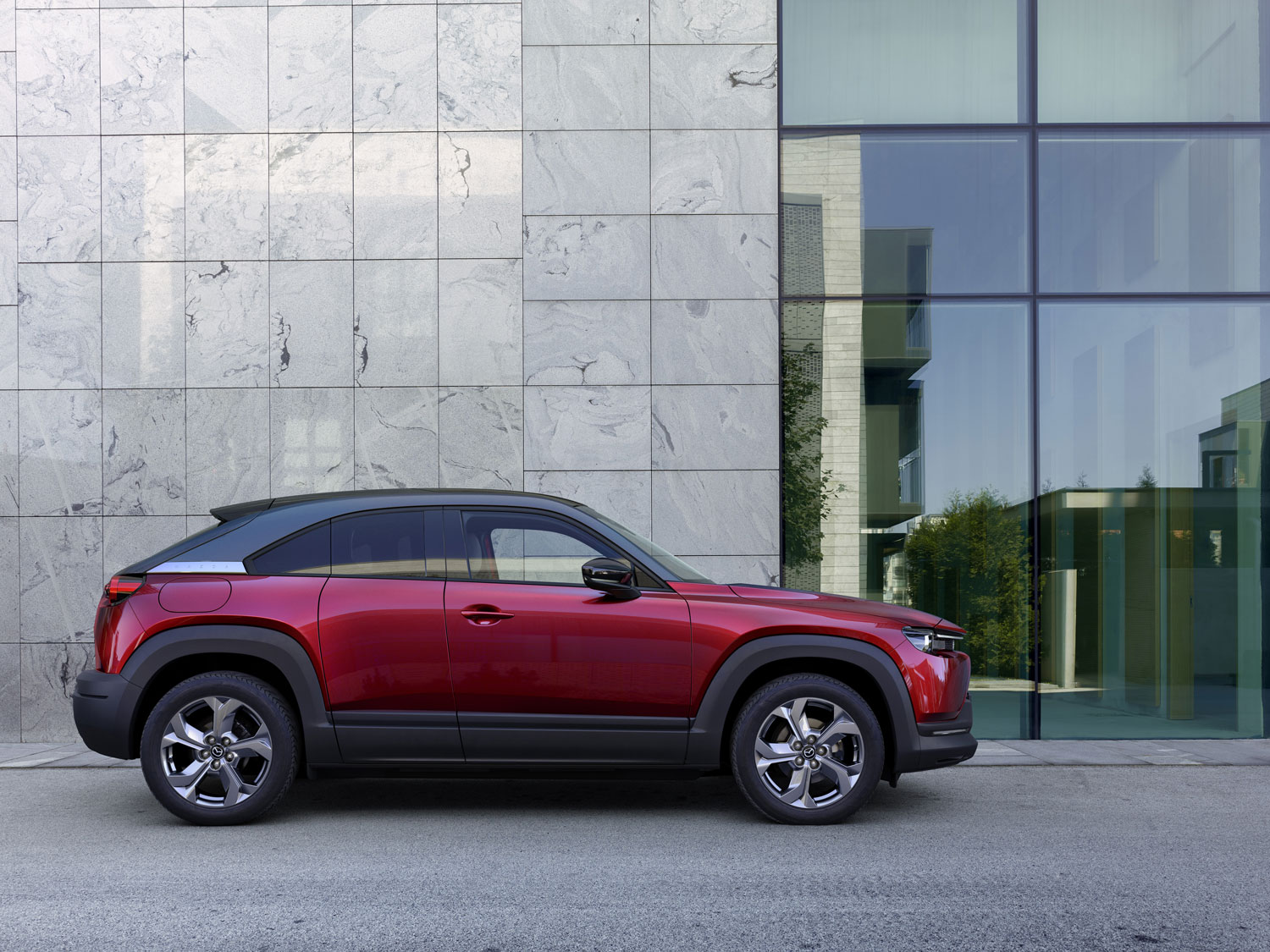For its new EV, Mazda taps its cork-making heritage
When we celebrated Mazda’s centenary back in January, we mentioned how the company started out as a cork producer in Hiroshima before making the switch to tool manufacturing, and ultimately, the production of three-wheeled motor vehicles just before the Second World War. However, now that Mazda’s first production EV, the compact SUV MX-30 is re-introducing compressed cork as a renewable material in its cabin, it’s worth digging deeper into Mazda founder Jujiro Matsuda’s business model. Here’s how Mazda remembers:
“With cork trees abundant in the region around Hiroshima and the local shipbuilding industry in full swing, sourcing cork from these trees for use in wooden ships was an obvious business to pursue. After a successful career in engineering in Osaka, where having started as an apprentice blacksmith, he started his own metal casting company, Mazda’s founder, Jujiro Matsuda returned to his native city of Hiroshima and joined Toyo Cork Kogyo as a board member in 1921.
Although his expertise was in machinery and engineering, he quickly proved his worth with several innovations including the production of pressed cork boards. Despite some initial setbacks, Jujiro—who would eventually take the post of president—succeeded in bringing new cork products to market including insulation and cushioning materials. After renaming the company Toyo Kogyo in 1927, he led the company into machinery manufacturing, which ultimately led to the production of three-wheeled trucks, building the basis of the Mazda we know today.
As the engineering part of the company grew, Jujiro decided to divest the cork element of business to another cork manufacturer, Uchiyama Manufacturing Corp, based in Okayama, east of Hiroshima, who took it off Toyo Kogyo’s hands in 1944. As well as assuming control of the cork manufacturing factories and machines, Uchiyama requested that Toyo Kogyo invest in the business, which led to the formation of Toyo Cork.”
20200402124618)
20200402124644)
20200402124632)
Fast-forward to today, and instead of using compressed cork for gaskets and insulation, the MX-30 is using it to reduce the need for the very materials that put an end to the cork business after the war—plastics.
Conceptually, the MX-30 differs from most BEVs in that it tries to be efficient by being lighter, thus using a smaller battery and offering less range. Its interior also features fibers made from recycled plastic bottles, as well as “bio-engineered plastic” in elements of the front and rear doors. Yet to add compressed cork to that eco-friendly picture, Mazda had to come up with new coatings and backings to make sure cork wouldn’t degrade from UV rays, or just the standard punishment storage compartments need to deal with these days.

Of course, a more visible party trick of the MX-30 is that it comes with “Freestyle” doors with a nod to the RX-8. These open to 80 degrees backwards, providing better access to both rows. Under the metal, Mazda’s first EV is powered by a single synchronous motor pushing out 141 horsepower and 195 lb-ft of torque, all sent to the front wheels.
20200402124834)
20200402124844)


